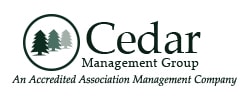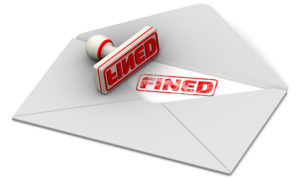Watch our Webinar on Covenant Enforcement – Best Practices below.
Homeowners associations bear the responsibility of enforcing the community’s rules and covenants. But, the process can be tricky, and HOAs can find themselves in hot water when they fail to follow the best practices. Here are the most important things to know about HOA rules enforcement.
What Is HOA Rules Enforcement?
The purpose of a homeowners association is to manage the community and its shared assets. This also involves maintaining the appeal of the neighborhood, which can extend to regulating the actions of owners and the use of properties. A big part of ensuring its success is enforcing rules and covenants.
Homeowners associations are given the authority to create and enforce rules to govern the community and its residents. This authority usually stems from state laws or the association’s governing documents. When a violation occurs, the same laws and governing provisions provide HOAs and their boards with the ability to penalize the offender.
Three Options for HOA Enforcement of Rules
There are three enforcement options generally available to homeowners associations and their boards:
1. DIY Approach
This approach sees the board, along with its agents and employees, take matters into its own hands. For example, some governing documents give boards express authority to repair, maintain, or restore any changes made to an owner’s property without approval.
This approach is generally not recommended for use from a legal standpoint, even if the association’s documents allow it. There are plenty of legal repercussions that can arise out of the situation. Plus, some owners are unpredictable and may even use violence against the board and its members when confronted with this type of remedy.
2. Injunctive Relief
Injunctive relief refers to getting a court to order an owner to do or not do something. This approach, while somewhat effective, is very time-consuming and expensive. As such, it is not always an ideal choice for HOAs. Additionally, boards can’t use injunctive relief all the time, as many violations are quite minor. It doesn’t make sense to sue an owner for simply parking their vehicle on the wrong side of the street.
3. Fining
Fining an offender is, by far, the most effective and efficient way to enforce an HOA’s rules. It is also the least expensive. But, boards have to follow certain procedures as well before they can fine an owner. Slapping on a fine isn’t as simple as knocking on an owner’s door and asking to collect on the fine.
Enforcement of Governing Documents
In an HOA setting, the restrictions that boards must enforce include architectural covenants, specific restrictions on owner property as recorded in the Declaration, and any other covenants spelled out in the governing documents (such as maintenance and assessment requirements). The association, through its board, is typically the one that enforces these covenants. But, individual owners can also enforce them by taking legal action against neighbors who violate them.
When it comes to architectural restrictions, there are two types to remember:
- Structural Restrictions. These refer to physical or structural parameters of the property (the size of a garage, the height of fences, etc.).
- Use Restrictions. These refer to how owners use their property (only using the garage for parking and not as a living space, not using the home for anything other than residential purposes, etc.).
Common Violations HOAs Encounter
Violations can happen at any point in time and in any form. However, some violations occur more often than others. Here are the three most likely scenarios boards face.
1. Failure to Maintain Property
Homeowners have an obligation to maintain their own property, while the HOA has an obligation to maintain the common areas. A common violation, though, is when homeowners fail to hold up their end of the deal. This can happen when owners fail to clean their siding, pull out pervasive weeds, mow their lawns, trim their trees and bushes, and restore damaged items.
2. Architectural Violations
Many owners fail to obtain approval for architectural changes, resulting in a covenant violation. Homeowners associations typically have procedures that owners must follow when making an architectural change, which includes submitting a request for approval.
Most architectural guidelines only pertain to structures that are affixed to the land (such as fences, sheds, etc.). As such, bird baths, trampolines, and yard art fall in the gray area since they are movable items. A good fix for HOAs is to include these specific items under the architectural guidelines in covenants.
3. Use Violations
Common use violations include nuisances, smells, noises, and interfering with the right to quiet enjoyment. For example, an owner might throw a loud party that extends well into the wee hours of the morning. Use violations can also cover rental violations and failing to make the necessary repairs to vehicles.
When it comes to wording, boards should stay away from prohibiting “unsightly” items. The term “unsightly” is subjective and, therefore, ineffective in enforcement. Everyone can have different opinions on what counts as unsightly. And, courts like objective standards as opposed to subjective standards.
Fundamental Procedures of HOA Covenant Enforcement
The fundamental due process requirements of HOA rules enforcement involves two parts: the Notice of the Violation and the Opportunity to Be Heard. While these two parts are essential, there may also be other requirements in the association’s governing documents that must be followed.
Part 1: Notice of the Violation
Boards must send a written Notice of the Violation to the owner who has violated the covenants or rules. The standard is to send it at least 10 days before the board takes any action, such as levying a fine. Boards can send the notice via email, regular mail, certified mail, or any combination that works best for them.
This notice should include the details of the violation as well as information on the hearing. Boards can choose to send multiple notices, beginning with a friendly warning letter. On the other hand, some boards opt to jump straight to sending the Notice of Hearing.
Part 2: Opportunity to Be Heard
Boards should then provide owners with the opportunity to be heard. This shows that the association has been more than reasonable and took all the steps so that owners can’t hold anything against the HOA down the line. While North Carolina law requires boards to hold a hearing, South Carolina does not. Still, it is recommended that boards do this step.
HOA Rules Enforcement 101: Requirements of the Hearing
The hearing itself doesn’t need to look like a mock court. It should just be an opportunity for the owner to be heard by whoever will make the decision. It is designed to get everyone in the same room and discuss the violation. Hearings have managed to resolve a lot of violations, with owners admitting to their fault, apologizing, and promising to fix it.
That being said, there are three requirements when it comes to organizing and carrying out a hearing:
1. Quorum
According to North Carolina law, the hearing should take place in the presence of a quorum of the board or adjudicatory panel/committee. Some HOAs have a committee specifically for this purpose. It is a good idea, though, to have the hearing directly with the board. This is because owners can still appeal to the board even after appearing in front of the adjudicatory panel or committee. Organizing a hearing with the highest authority present eliminates this extra step.
2. Opportunity
Again, the hearing acts as the owner’s opportunity to present their side of the story. As such, if the owner fails to show up, the HOA can argue that the opportunity was still provided.
Owners will sometimes give excuses to delay the hearing. Boards can allow the postponement of the hearing, though it is smart to only do so once to prevent the owner from abusing the opportunity. This way, the board can argue in front of a court that they have been more than accommodating.
3. Results
After the hearing, associations are legally required (in North Carolina) to provide the results of the hearing in writing. The result informs the owner what the board’s decision is, any enforcement steps (fines), and how owners can cure the violation.
A Few More Tips for HOA Boards
Here are additional tips when it comes to enforcing rules in the community:
- Act with proper formality. This means that the protections granted to an HOA only apply if the HOA is operating in good faith. Operating in good faith involves fulfilling its duties as a corporation, which includes meeting regularly as well as keeping good and accurate records.
- Utilize professionals. If the board has experts at their disposal, use them. The board does not have to know everything. Professionals — such as HOA managers, accountants, and attorneys — exist to guide the association and the board.
- Be fair. Boards must always act reasonably and make decisions fairly. Even the slightest perception of unfairness can put the HOA in a bad position.
The Bottom Line
When it comes to HOA rules enforcement, the standard is to put the association in the best possible position to enforce the covenants and justify any fines. That includes following the proper procedures and exercising a fair hand, as well as using unambiguous, clear, and reasonable language when crafting rules and covenants.
For HOAs that are having trouble with management, Cedar Management Group is the way to go. Call us today at (877) 252-3327 or contact us online to know more.
RELATED ARTICLES:
- HOA Bylaws and CC&Rs: What’s The Difference?
- House Bill 320: New Virtual Meeting Law For North Carolina HOAs
- HOA Selective Enforcement: Playing It Fair









